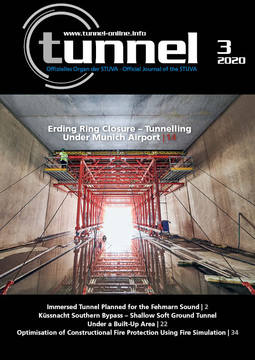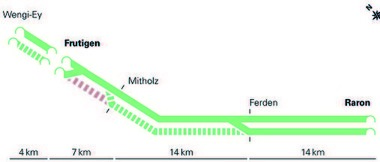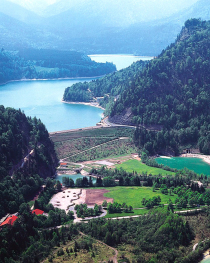Water Ingress in the Lötschberg Base Tunnel
The east tunnel of the Swiss Lötschberg base tunnel has already had to be closed three times this year due to water and mud ingress: In February, March and most recently at the end of April 2020. The leak is located 2.5 km from the south portal. During construction, a karst spring was discovered at this location during exploratory drilling. This was not sealed; instead, the water was fed into hoses located behind the sealing and the concrete inner shell. According to Stefan Irngartinger, project manager at Alptransit BLS, the operators now concluded that high water pressure had caused damage to the hoses and to the waterproofing system.
Penetrating water and sludge are currently being channelled into temporary sedimentation tanks. According to BLS, the area of the leakage is monitored with measuring points and video cameras. There are currently no plans to inject the exploratory borehole; rather, after demolition of the inner lining along a length of 10–15 m, a gallery is to be driven and a new cavern is to be excavated to the east of the east tunnel, where the muddy water from the karst zone is to be discharged into a sedimentation basin with a capacity of at least 1000 m³. The water can be drained off via the tunnel‘s drainage system, but the sand would have to be transported separately in railway wagons.
If the Swiss Federal Office of Transport approves this measure, work could begin as early as autumn 2020. BLS assumes that the eastern tube will be closed for several months. It is not yet possible to give details of the costs, but a two-digit million-euro amount is possible.



